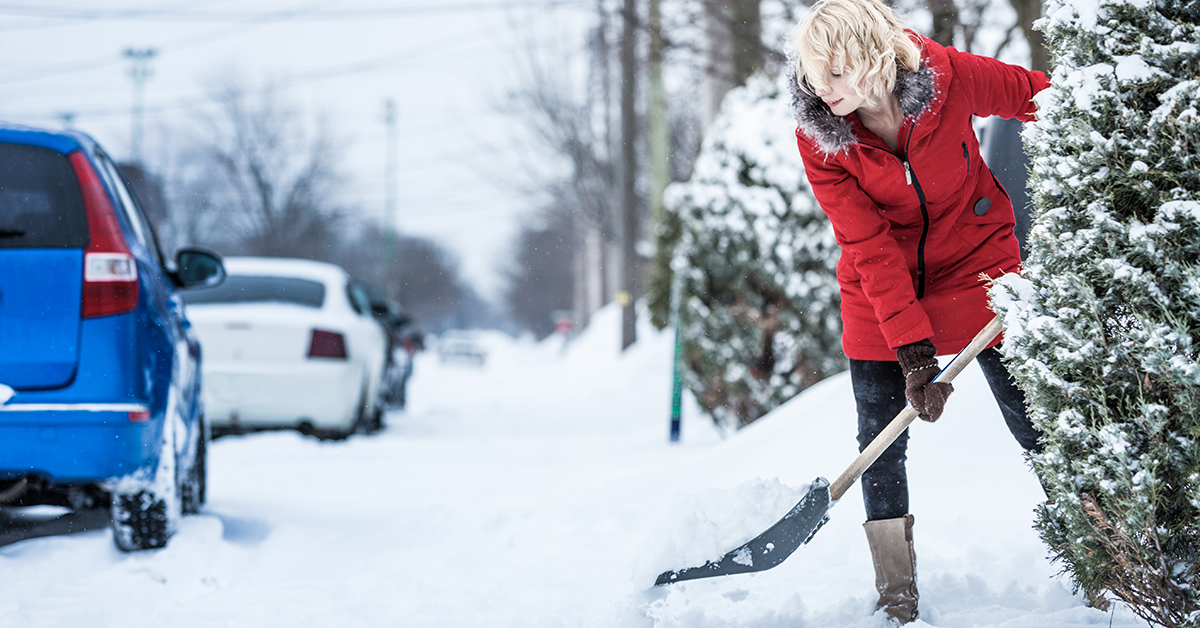
Preventing Lower Back Pain Injuries when Shoveling Snow
Snow shoveling is one of the most common causes of lower back pain and injuries. This occurs frequently during the winter months, but can persist throughout the year if left untreated. However, there are certain ways in which one can shovel snow safely, preventing injuries to the back. In this article, we will briefly review these methods.
Choosing the Appropriate Snow Shovel
Snow shovels come in many different shapes and sizes, but the best way to prevent lower back injuries when shoveling snow is to use a shovel that is ergonomically designed. By placing minimal stress on the back, these shovels can help users to avoid injury. Using a shovel that is the right length and has a curved or adjustable handle can be extremely beneficial. These types of shovels allow the person to shovel snow without having to bend down too much. The best type of snow shovels tend to be lightweight (ideally made of plastic) so that they are easy to lift.
Warming Up Before Shoveling Snow
One of the common reasons for any form of injury is a lack of sufficient warm-up before performing the activity. This is especially true in the case of snow shoveling. In the winter months, back muscles tend to be stiff, requiring loosening up through simple exercise. Doing a simple warm-up can prevent injuries from shoveling snow.
Performing Regular Exercise
Regular exercise keeps the muscles firm, allowing them to maintain adequate strength and tone. This is extremely beneficial in preventing injury, as the muscles will be primed for any form of strenuous activity.
Using Appropriate Lifting Techniques
There are certain shoveling techniques that are useful in preventing back injuries. For example, rather than lifting the snow, it is better to just push it to one side. If the snow has to be lifted, specifically designed movements - placing the lowest amount of stress on the back - must be made. It is important to face towards the snow when trying to lift it, keeping the shoulders and the hips in a direct line with it. When bending down, bend at the hips rather than at the back. Then, bend at the knee so that most of the stress is placed on the quadriceps muscles rather than the back. Grip the shovel with both hands in a comfortable position. When shoveling the snow, avoid twisting the back in order to throw the snow away. Some claim that keeping the hands about one foot away from the handle of the shovel can help to ward off back injuries also.
Start Small
Initially, it is important that individuals start to shovel snow in small quantities. Once they have become accustomed to these safer techniques, larger amounts of snow can be shoveled. In the event that there is a huge layer of snow to shovel, it is recommended that the top layer be removed first. This layering process should be continued until the entire pile is removed. It is not recommended that individuals attempt to take the whole block of snow out in one attempt, as this can place a great deal of stress on the back.
Taking Breaks
Shoveling snow is not a commonly performed activity, and therefore can result in injury if too much is done in one session. Taking breaks between shoveling sessions or asking a friend to help can be a crucial decision.
Wear the Right Footwear
Snow can be slippery, so wearing the right footwear will provide a solid foundation on which a person can firmly stand on the ground and avoid slipping when shoveling snow. The examples listed above are just some of the ways in which a person can prevent lower back injuries when shoveling snow.
Of course, if snow shoveling is not an option, then using a simple snowblower can be of great assistance. Also, these can be easier to use. In conclusion, keeping the above guidelines in mind can prevent a lifetime of lower back pain and injury.
